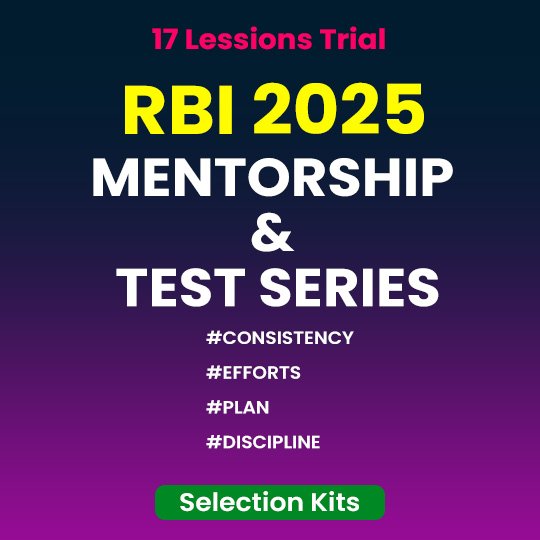Daily Current Affairs Quiz
11&12 May, 2025
National Affairs
1. Kadbanwadi Grassland Crisis
Overview of Kadbanwadi Grassland
- Located in Indapur tehsil, Pune district, Maharashtra, spread over 2,000 hectares.
- Home to Bengal foxes, striped hyenas, Brahminy kites, and the endangered Indian grey wolf, a keystone species.
- Strong history of coexistence between shepherd communities and wolves.
Plight of the Indian Grey Wolf
- Population decline: From 70 wolves in 2016 to just 6 in the latest count (Dec 2024–Jan 2025).
- Threats:
- Feral dogs: Hunt in packs, attack isolated wolves, and scavenge city waste.
- CDV (Canine Distemper Virus): Highly contagious disease from dogs, recently killed two wolves.
- Genetic dilution: Evidence of hybrid wolf-dogs found, disrupting pack behavior and breeding.
- Habitat pressure: Encroachment, reduced shepherding, and inadequate waste management.
Legal and Conservation Challenges
- Maharashtra Forest Rules, 2014 allow removal or euthanization of dogs in reserve forests.
- Forest officials, however, hesitate to act due to backlash from animal rights groups.
- Vaccination efforts are being considered but are logistically challenging.
TH
2. Kerala’s ‘Vruthi’ Campaign
What is Vruthi?
- Vruthi means cleanliness of the body and mind.
- Launched on October 2, 2024, it marks Kerala’s shift from traditional sanitation approaches to a deeply participatory, culturally rooted waste management movement.
Why Was the Campaign Needed?
- Shift in consumption patterns post-liberalisation led to unmanageable, non-biodegradable waste.
- Kerala’s urbanisation and reduced agricultural base (GDP share <10%) worsened the crisis.
- Traditional methods of backyard disposal became unviable; waste began spreading in neighbourhoods.
- Public health concerns like dog bites, Zoonotic diseases, and sanitation worker casualties raised alarms.
How Is Vruthi Different from Swachh Bharat Mission?
- SBM 1.0 and 2.0 are top-down, infrastructure-heavy, and supply-driven.
- Vruthi and Malinya Muktham Nava Keralam are bottom-up, people-centric, and focused on behavioural change.
- Emphasises technology neutrality, allowing for context-specific waste solutions (e.g., Black Soldier Fly composting, Windrow Composting).
TH
Banking/Finance
1. SEBI’s New Derivatives Risk Framework
Context:
SEBI aims to tighten risk management and curb excessive speculation in the equity derivatives market through an updated set of rules. Reforms follow industry feedback on its February 2025 consultation paper.
Major Reforms Finalized
Revised Open Interest (OI) Calculation
Open Interest (OI) refers to the total number of outstanding futures or options contracts that have not been settled. It represents the number of active contracts in the market at a given time.
- New method: Future Equivalent (Delta-based) OI framework
- Offers a more accurate reflection of market activity and trader positioning based on derivatives’ price sensitivity to the underlying assets.
Updated Index Options Limits
- Gross position limit for index options raised to ₹10,000 crore.
- Net limit capped at ₹1,500 crore.
- Earlier proposed gross limit of ₹1,500 crore scrapped due to pushback from HFTs and market makers.
Market-Wide Position Limit (MWPL) Recast
Market Wide Position Limit (MWPL) is the maximum number of open F&O contracts permitted for a particular underlying stock. This limit is set by the exchange. Hence, it is the maximum permitted OI for a particular underlying stock. It is expressed as a number of shares.
- MWPL now set as the lower of:
- 15% of free-float market cap, or
- 65x the average daily delivery value.
- New limits align derivatives exposure with underlying cash market liquidity.
Exposure Caps
- FPIs and Mutual Funds: Limited to 30% of MWPL per stock.
- Individual traders: Restricted to 10% of MWPL per stock.
- Aim: Reduce manipulation and frequency of F&O ban periods.
Intraday Surveillance Enhancements
- No intraday position limits will be imposed.
- However, random intraday checks (4 per day) will be mandated to detect speculative misuse.
- Exchanges to create Standard Operating Procedures (SOPs) for trader surveillance.
Weekly Expiry Restrictions
- F&O expiries limited to two days per week.
- New expiries will require prior SEBI approval.
- Impacts players like Metropolitan Stock Exchange, which planned weekly Friday expiries.
Trader Profitability Survey
- Fresh SEBI survey to assess F&O trader outcomes expected by mid-June.
- Past data (FY22–FY24): 93% of individual traders lost money in derivatives trading.
2. Revolutionizing India’s Insurance Sector

Context:
India’s financial sector is positioning itself as a hub for global investment, with a focus on attracting foreign banks and FDI in insurance. Announced in the February Budget, this policy aims to boost capital inflow and trust in the sector by simplifying regulations.
Projected Growth of the Insurance Market
- India is on track to become the 6th largest insurance market by 2032, growing at a 7.3% CAGR from 2024 to 2028, the highest among G20 nations.
- Since 2000, FDI in insurance has crossed ₹82,847 crore, signaling sustained confidence and growth.
IRDAI’s Transformation and Leadership
- Under Debasish Panda’s leadership, the Insurance Regulatory and Development Authority of India (IRDAI) evolved from a compliance-focused body to a mission-driven institution.
- Regulatory Reforms: 78 regulations were consolidated into 26, and 370 circulars were merged into 12, creating an agile and efficient regulatory framework.
- Three-Year Sunset Clause: Regulations are now periodically reassessed for relevance, ensuring that outdated rules are revised or discarded.
Bima Trinity: A Comprehensive Strategy for Insurance Inclusion
- Bima Sugam: A digital marketplace designed to democratize insurance access with low-cost, paperless, and cashless options, transforming customer experience and underwriting.
- Bima Vistaar: A bundled, affordable insurance product covering life, personal accident, property, and daily income during surgeries, offering wide coverage at a low cost.
- Bima Vahak: A women-led grassroots distribution force that empowers local agents to drive insurance awareness and trust in underserved communities.
Focus on Inclusivity and Accessibility
- India’s vision of “Insurance for All by 2047” shifts the focus from premium collection to ensuring basic risk protection for every citizen, including farmers, gig workers, and street vendors.
- The emphasis is on making insurance affordable and inclusive, extending coverage to underserved populations.
Risk-Based Capital and Financial Reporting Reforms
- Risk-based capital norms and compliance with International Financial Reporting Standards (IFRS) are underway, enhancing the resilience and accountability of insurers.
- The transition to risk-based supervision aims to improve the capital adequacy, transparency, and risk sensitivity of insurance companies.
TH
3. NRI Financial Compliance Guide 2025
Context:
If an NPS subscriber renounces Indian citizenship without obtaining an OCI card, they must notify the NPS Trust. The NPS account will be mandatorily closed in such cases.
Banking Compliance for New NRIs
An NRO (Non-Resident Ordinary) account is a bank account for Non-Resident Indians (NRIs) to manage income earned or deposits made in India. It’s held in Indian Rupees and allows NRIs to deposit, withdraw, and manage their Indian income while earning interest.
- Resident bank accounts must be converted to NRO accounts.
- NRE accounts should be opened for investing foreign income in India.
- NRO account: Used for income sourced in India (e.g., rent); interest is taxable.
- NRE account: Used for foreign income; interest is tax-free and repatriable.
Mutual Fund (MF) Guidelines for NRIs
- Change MF status to Non-Resident Individual (NRI).
- Link existing folios to NRO accounts.
- Use NRE account for new investments from foreign income.
- Submit enhanced KYC documents to SEBI-registered KYC Registration Agency (KRA), including:
- Identity proof
- Visa/residency permit/OCI card
- Overseas address proof
- FATCA (for US NRIs) / CRS declarations (for UK, Canada, etc.)
- Note: Some fund houses do not allow FATCA/CRS jurisdictions.
- MF Taxation: Same as residents, but TDS applies at redemption.
- Double Taxation Avoidance Agreement (DTAA) can reduce tax burden.
Demat Account and Trading Rules
- Resident demat account must be converted to NRI demat account.
- Required documents: NRI KYC form, PAN, passport, visa, and overseas address.
- Open NRO non-PIS trading and demat account.
- Existing holdings are transferred to this account.
- Repatriation limits:
- NRO account: Up to $1 million/year.
- NRE account: No cap.
- Permitted trading:
- F&O via custodian in NRO non-PIS account.
- No intraday equity trading, commodity, currency, or SGB trading.
- Some brokers allow BTST trades in NRO non-PIS accounts.
PPF, EPF & Insurance Compliance
- PPF: Can be continued till maturity, but not extendable beyond 15 years.
- EPF interest becomes taxable; NRIs must choose to continue or withdraw.
- Inform life/health insurers of NRI status; coverage may vary by country.
Residential Status & Income Tax Rules
- Resident for tax purposes if:
- Present in India ≥182 days in FY, or
- ≥60 days in FY + ≥365 days in previous 4 FYs.
- Non-residents pay tax only on income sourced in India.
- File ITR if:
- Indian income exceeds basic exemption, or
- You have LTCG, TDS refund, or carry-forward losses.
Leverage DTAA to Minimize Tax
- DTAA helps avoid double taxation on income (capital gains, interest, dividends).
- To claim benefits:
- Submit Tax Residency Certificate (TRC).
- Form 10F.
- Self-declaration of no permanent establishment in India.
BS
4. Morningstar DBRS Upgrades India’s Sovereign Credit Rating to ‘BBB’
Context:
Long-Term Foreign and Local Currency – Issuer Ratings upgraded to ‘BBB’ from ‘BBB (low)’, with a Stable trend. Short-Term Foreign and Local Currency Issuer Ratings upgraded to ‘R-2 (high)’ from ‘R-2 (middle)’, also with a Stable trend.
Key Highlights:
- India’s Long-Term Foreign and Local Currency – Issuer Ratings:
- From BBB (low) to BBB with a Stable outlook
- India’s Short-Term Foreign and Local Currency – Issuer Ratings:
- From R-2 (middle) to R-2 (high) with a Stable outlook
Main Drivers for the Upgrade
- Robust Structural Reforms:
- Large-scale investments in infrastructure
- Aggressive digitalisation initiatives
- Focus on fiscal consolidation with declining debt and deficit metrics
- Strong Economic Performance:
- Average real GDP growth of 8.2% between FY22 and FY25
- Sustained macroeconomic stability:
- Controlled inflation
- Range-bound exchange rate
- Stable external accounts
- Resilient Financial Sector:
- Banks with high capital adequacy ratios
- Non-performing assets (NPAs) at 13-year low, reflecting improved asset quality
Outlook and Future Prospects
- Stable Trend maintained for both long-term and short-term ratings.
- Potential for further upgrades if:
- Structural reforms continue, particularly those enhancing investment and productivity
- There is a decline in public debt-to-GDP ratio
- India maintains macroeconomic discipline and enhances institutional effectiveness
Rating Methodology
- Morningstar DBRS uses ‘high’, ‘middle’, and ‘low’ suffixes (e.g., ‘BBB (low)’, ‘R-2 (high)’), which are equivalent to the +/- symbols used by Fitch and S&P.
BS & PIB
5. RBI Relaxes FPI Investment Norms in Corporate Debt Securities
Context:
The Reserve Bank of India (RBI) has eased investment norms for Foreign Portfolio Investors (FPIs) under the general route, specifically for corporate debt securities. This move is aimed at enhancing FPI participation in India’s debt market and improving market liquidity.
Key Highlights of the Relaxation
- Withdrawal of Short-Term Investment Limit
- FPIs are no longer required to adhere to the cap on short-term investments in corporate debt.
- Removal of Concentration Limit
- The concentration limit, which restricted how much a single FPI could invest in a particular corporate issuer, has been withdrawn.
- Applies to General Route
The relaxation applies to investments made under the general route for both:- Government securities
- Corporate debt instruments
- Effective Immediately
- The revised norms are already in effect, giving FPIs immediate operational flexibility.
Impact & Objective
- Boosts Foreign Participation: Eases regulatory burden, encouraging more FPI inflows into India’s corporate debt segment
- Enhances Market Liquidity: Higher foreign participation can lead to increased trading volumes and stability
- Aligns with Reform Agenda: Complements broader efforts to deepen India’s capital markets and attract global investors
6. SEBI Imposes Cooling-Off Period for Directors of Market Infrastructure Institutions (MIIs)
Context:
The Securities and Exchange Board of India (SEBI) has amended key regulations to introduce a mandatory cooling-off period for directors transitioning between competing Market Infrastructure Institutions (MIIs), enhancing governance and safeguarding market integrity.
Key Highlights
- Amended Regulations
- SECC Regulations, 2018
- Depositories and Participants Regulations, 2018
- Applicability
- Affects non-independent directors and public interest directors of MIIs
- MIIs include: Stock exchanges, Clearing corporations, and Depositories
- Cooling-Off Period Norms
- Non-independent directors: Must serve a cooling-off period before joining the board of a competing MII
- Public interest directors: Can be appointed to a competing MII for a 3-year term only after SEBI’s prior approval
- Cooling-off rule applies only when directors move to a competing institution
Purpose and Implications
- Strengthens Governance: Prevents conflicts of interest and ensures a clean separation between competing entities
- Protects Market Integrity: Limits undue influence and ensures impartiality in the operations of market-critical institutions
- Improves Regulatory Oversight: Reinforces SEBI’s framework for ethical leadership and institutional neutrality across MIIs
Market Infrastructure Institutions (MIIs)
Market Infrastructure Institutions (MIIs) are the backbone of a robust and well-regulated financial market. These institutions include stock exchanges and depositories that facilitate seamless trading, clearing, and settlement of securities, ensuring transparency, investor protection, and financial stability.
7. Index Options
Context:
Retail participation in index options remains high despite curbs introduced in October 2023 and proposals in February 2024. A SEBI study revealed that individual investors lost ₹1.89 trillion in FY22–24, mostly on options expiry days, while high-frequency traders (HFTs) profited. India has the highest index options trading volumes globally, especially compared to the size of its cash equity market.
What Are Index Options?
An index option is an asset which enables its holder to trade (buy or sell) the value of an underlying index, for example, the Nifty 50, at a predetermined price. In the dynamic landscape of financial markets, index options have carved a special place as a versatile financial instrument.
Definition:
- Index options are financial derivatives where the underlying asset is a stock market index (like Nifty 50 or BSE Sensex), not individual stocks.
- These contracts give the buyer the right (but not obligation) to buy or sell the index value at a specific strike price by the expiration date.
Purpose:
- Investors use index options to trade broader market trends, hedge portfolios, or gain leveraged exposure to index movements.
Types of Index Options:
- Call Option: Right to buy the index at a specified price.
- Put Option: Right to sell the index at a specified price.
Key Components:
- Strike Price
- Underlying Index Value
- Expiration Date
How It Works:
- Only the premium is paid by the buyer (maximum possible loss).
- Profit/loss is determined by the difference between strike price and index level at expiry.
- Index options in India are traded after futures are launched and are standardized with lot sizes and expiry dates.
Benefits of Index Options:
- Profit in Both Directions: Positions can be taken for rising or falling markets.
- Hedging Tool: Protects portfolios from adverse market movements.
- Leverage: Small premium controls larger exposure.
Previous Measures Taken
- Lot size of index options was increased from 25 to 75 in October 2023.
- Only one weekly index option expiry per exchange was allowed to limit speculative losses.
- February 2024 proposals included:
- Gross exposure cap of ₹1,500 crore monitored intraday.
- Revamped open interest (OI) calculation methodology using delta-based OI to reflect true market risk.
Major Regulatory Revisions Proposed in 2025
- Intraday exposure cap dropped; SEBI now proposes:
- Gross limit: ₹10,000 crore
- Net limit: ₹1,500 crore (end-of-day compliance)
- These changes follow market opposition to strict intraday surveillance, which was feared to reduce liquidity and increase impact cost.
- Position monitoring through the day for index options may be dropped entirely.
Mint
Agriculture
1. First-Ever Rice Pangenome
Context:
Global Scientists Build First-Ever Rice Pangenome to Boost Climate Resilience and Yields.
What is the Rice Pangenome?
- A pangenome includes both the core and unique genes across multiple varieties of a species.
- Scientists have assembled the first rice pangenome by integrating genomic data from 144 wild and cultivated rice varieties across Asia.
- This effort mirrors the Human Genome Project in scope and significance—capturing genetic diversity crucial for crop improvement.
Why the Pangenome Matters
- Traditional reference genomes cover only a single variety (O. sativa ssp. japonica). The pangenome adds 3.87 billion new base pairs and over 69,000 genes, including:
- 28,907 core genes
- 13,728 wild-rice-specific genes
- Wild-rice-specific genes are especially important for drought resistance, disease tolerance, and climate resilience.
Key Findings and Scientific Advances
- High-fidelity (HiFi) PacBio sequencing was used for high-accuracy genome mapping.
- Population genetics reinforced that:
- All Asian cultivated rice evolved from wild Or-IIIa, a variant of Oryza rufipogon (ancestor of japonica).
- Indica rice developed through hybridization between ancient japonica and Or-I populations.
- About 20% of the genes identified are unique to wild rice, offering untapped resources for breeding programs.
Climate and Agricultural Significance
- Rice is the staple crop for nearly two-thirds of the global population.
- India produced a record 220 million tonnes in 2024-25, but faces risks:
- Temperature rise of 0.7°C since 1901
- 2024 was the hottest year on record with 0.9°C above-average minimum temperatures
- Studies warn of reduced yields and increased arsenic uptake under rising temperatures
- Genome-edited rice varieties, Samba Mahsuri and MTU 1010, developed by ICAR for drought resistance and yield boost, are awaiting field release.
Applications and Future Potential
- The pangenome serves as a powerful tool for:
- Precision breeding of high-performance rice
- Transferring climate-resilient genes from wild to cultivated varieties
- Enhancing phenotypic plasticity and regeneration capacity
- Enables rapid development of disease-tolerant and climate-resilient rice cultivars, critical for food security under global warming.
Regulatory Framework of Genetically Modified (GM) Crops in India
India adopts a multi-tiered regulatory approach to ensure the safety, efficacy, and compliance of genetically modified (GM) crops before their approval and use.
Food Safety and Standards Act, 2006
- Prohibits the import, manufacture, use, or sale of GM food products without approval from the Food Safety and Standards Authority of India (FSSAI).
- Ensures consumer health safety through strict pre-market assessment protocols.
Review Committee on Genetic Manipulation (RCGM)
- Operates under the Department of Biotechnology (DBT).
- Oversees research and development (R&D) activities related to GMOs.
- Monitors laboratory and field research to ensure biosafety compliance during early stages.
State Biotechnology Coordination Committee (SBCC)
- Constituted at the state level.
- Monitors the implementation of biosafety guidelines in research institutions and industries handling GMOs.
- Functions as a nodal agency for state-level biosafety coordination.
District Level Committee (DLC)
- Functions under SBCC and GEAC.
- Inspects and investigates local GM activities.
- Reports compliance or violations of regulatory guidelines at the grassroots level.
Genetic Engineering Appraisal Committee (GEAC)
- Final authority under the Ministry of Environment, Forest and Climate Change (MoEFCC).
- Grants environmental clearance for GM crop trials and commercial release.
- Ensures ecological and environmental safety under the Environment (Protection) Act, 1986.
GM Crop Approval Process
- Case-by-case scientific evaluation involving:
- Health and environmental risk assessments
- Field trial monitoring
- Stakeholder consultation
- Approval only after compliance with biosafety guidelines framed under the Environment (Protection) Act, 1986.
BS
Facts To Remember
1. World’s longest banana infructescence found in the forests of Andamans
An infructescence of about 4.2 metres has been recorded in a species of wild banana from Andaman and Nicobar islands, making it the longest infructescence recorded in bananas across the world. The details of the discovery were published in an international peer reviewed science journal Botany Letters earlier this year.
2. Salunkhe, Deepika win recurve bronze
Parth Salunkhe and Deepika Kumari performed creditably well to clinch the recurve men’s and women’s individual bronze medals respectively on the concluding day of the Archery World Cup Stage-2 in Shanghai.
3. Miss World 2025 kicks off with a cultural extravaganza in Hyderabad
The 72nd edition of the Miss World pageant officially began on a dazzling note at the Gachibowli Indoor Stadium, with a vibrant showcase of Telangana’s cultural heritage.
4. DARPG Hosts Rashtriya Karmayogi Jan Seva Training Programme to Empower Civil Servants
The Department of Administrative Reforms & Public Grievances (DARPG) conducted a dynamic training session under the “Rashtriya Karmayogi Jan Seva Program” on May 10, 2025, in New Delhi. Organized in collaboration with the Capacity Building Commission, the programme aimed to enhance competencies of public officials from Assistant Section Officers to Under Secretaries.















